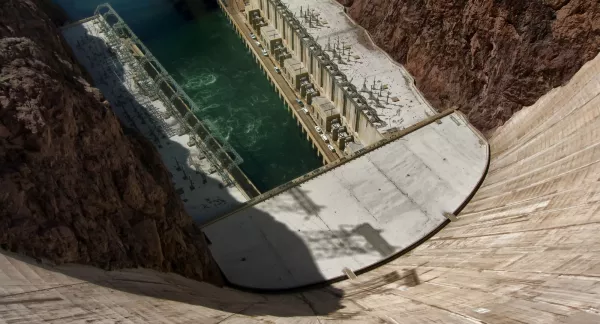Guidelines for Optimizing Nutrient Removal Plant Performance
Abstract
Water resource recovery facilities (WRRFs) across the United States are facing demands to remove nutrients. Existing nutrient removal and secondary WRRFs alike are challenged to optimize their WRRFs to reduce nutrients discharged into receiving water bodies. This project developed a comprehensive guidance tool that WRRF staff and others can use for optimizing WRRFs to meet one or more fundamental objectives: (1) reduce nutrient discharge levels, (2) increase reliability, and (3) reduce costs. The guidance tool provides a stepwise progression starting with the current treatment processes and advancing to a list of nutrient removal optimization strategies. The comprehensive guidance documents presented in the report have also been summarized into a standalone, user-friendly web tool. In addition to these resources, the research team hosted a 13-part webcast series covering all facets of nutrient management. The 12/7/23 webcast is available for replay and the others are available as slides only. Results from the webcast audience polls are incorporated into the report and available as a project paper. Published in 2023.
Project Resources:
- Report and Executive Summary
- Path to Nutrient Optimization Web Tool
- 13 Webcasts (1 available for replay & 12 available as slides)
- Project Paper – Appendix E: Webinar Series Reports
Resources
Guidelines for Optimizing Nutrient Removal Plant Performance
Water resource recovery facilities (WRRFs) across the United States are facing demands to remove nutrients. Existing nutrient removal and secondary WRRFs alike are challenged to optimize their WRRFs to reduce...
Guidelines for Optimizing Nutrient Removal Plant Performance
The Path to Nutrient Optimization web tool is built around the guidance documents presented in the project 4973 report. The web tool leads users from their specific water resource recovery...
Nutrient Discharge Permitting and WRRF Optimization
This webcast will provide an overview of regulatory trends in the United States which may require optimization for nutrient removal. Presenters will discuss strategies to comply with regulatory load targets...
Tools to Evaluate Nutrient Optimization in WRRFs
This webcast will cover tools to evaluate nutrient optimization opportunities. Evaluation tools help vet a proposed optimization process/technology and can help support a proposed nutrient optimization approach. Such tools can...
Optimize Nutrient Removal WRRF Operations
The focus of this webcast is on tools and strategies for operators to optimize nutrient removal in WRRFs. “Optimization” includes reducing operational, energy, and chemical costs and improving nutrient removal...
Nutrient Reduction Approaches for Small Systems
This webcast will explain the nutrient regulatory landscape for small systems (less than 10,000 people or 1 mgd) and will cover tertiary treatment, stand-alone, pre-engineered, and natural systems. Some systems...
Optimizing Nutrient Removal WRRFs
This webcast will cover optimization strategies for nitrogen and phosphorus removal in nitrifying, conventional nutrient removal, and tertiary nutrient removal processes. Presenters will discuss ammonia, nitrogen, chemical, and biological phosphorus...
Nutrient Reduction from Secondary BOD Removal WRRFs
This presentation will cover strategies to reduce nitrogen and phosphorus discharged from an existing secondary biological oxygen demand-only plant. The discussions will focus on process modifications, limited change within the...
Strategies to reduce O&M Cost in Nutrient Removal WRRFS
The presenters will discuss strategies to reduce O&M costs at nutrient removal facilities,* including metrics for energy and chemical usage. They will also cover strategies to reduce energy and chemical...
Instrumentation and Control for Nutrient Optimization Part 2: Controls
Internal recycles, such as reject water and sidestreams from solids processing WRRFs can impact nutrient removal efficiency as well as create nuisance conditions. Managing these recycles can improve nutrient removal...
Instrumentation and Control for Nutrient Optimization Part 1: Sensors
Internal recycles, such as reject water and sidestreams from solids processing WRRFs can impact nutrient removal efficiency as well as create nuisance conditions. Managing these recycles can improve nutrient removal...
Sidestream Management to Optimize WRRF Nutrient Removal
Internal recycles, such as reject water and sidestreams from solids processing WRRFs can impact nutrient removal efficiency as well as create nuisance conditions. Managing these recycles can improve nutrient removal...
Beyond Liquid Treatment: Reduce Nutrient Discharge Loads by Other Means
This session will cover nutrient discharge reduction “by other means,” such as through wetlands, effluent polishing, reuse, and other strategies outside mainstream treatment. Technologies like algal treatment and nature-based solutions...
Emerging Technologies for Nutrient Optimization
This webcast will discuss emerging technologies for nutrient optimization of existing facilities, including emerging process developments, equipment, treatment and regulatory strategies, and overall system nutrient control approaches. The webcast will...
Applied Fundamentals for Nitrogen and Phosphorus Removal Optimization
This webcast will cover process fundamentals, focusing on implications and opportunities for optimizing nutrient reduction at WRRFs. Presenters will go over the chemistry, microbiology, and processes used for nitrogen and...

